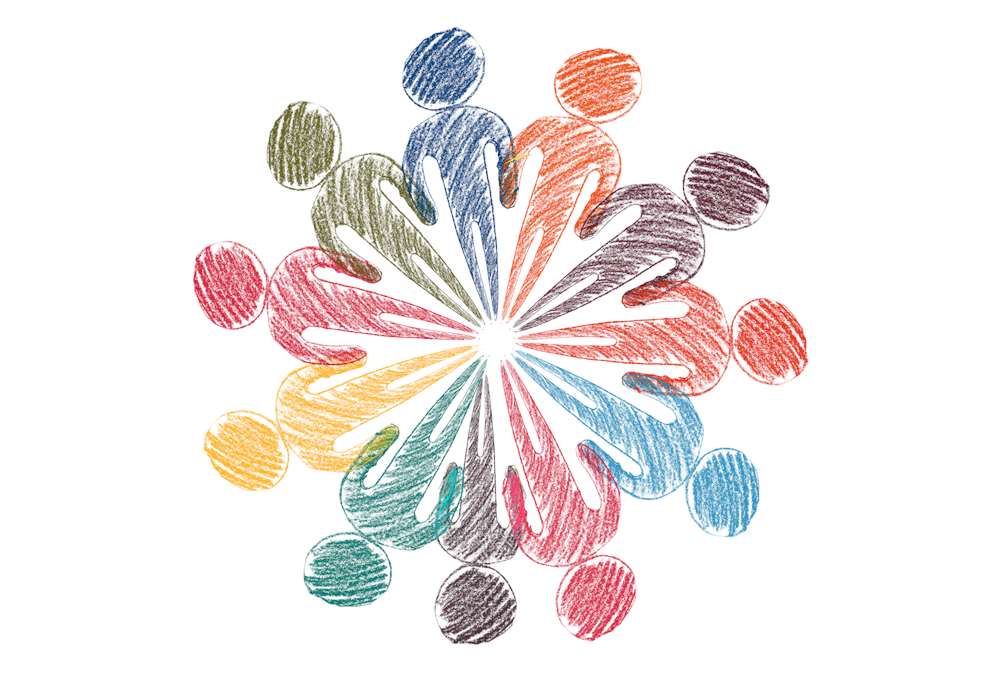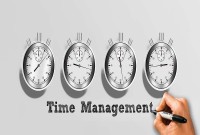- Home
- Business Processes
- Industry Knowledge
- Aerospace Industry
- Automotive Industry
- Banking Domain
- BFSI Industry
- Consumer/ FMCG Industry
- Chemicals Industry
- Engineering & Construction
- Energy Industry
- Education Domain
- Finance Domain
- Hospitality Domain
- Healthcare Industry
- Insurance Domain
- Retail Industry
- Travel and Tourism Domain
- Telecom Industry
- Leadership Skills
- eLearning
- Home
- Domain Knowledge
- Management Concepts
- Phases of Team Development
Phases of Team Development
All the teams are dynamic in nature and they take time to come together, they form, develop, and grow in stages, over a period of time. Teams go through five progressive stages: Forming, Storming, Norming, Performing and Adjourning. In this article, we want to introduce you to these stages of team development and certain strategies that you can use to help the team grow and develop in each of these stages.
Need for Understanding the Development Phases
Managers need to understand group behavior and team concepts as effective team building requires a manager to follow a systematic planning and implementation process. As a leader, you need to be flexible as the expectations from your role as a leader will change as the team passes through these various stages of development. In this article, we want to introduce you to these stages of team development and certain strategies that you can use to help the team grow and develop in each of these stages.
Leading successful teams is an art, and team leaders can face many challenges when trying to optimize team performance. Teams go through five progressive stages: Forming, Storming, Norming, Performing and Adjourning. Not all teams progress to the end stages. Some teams may be simply ineffective and might not get organized or cohesive enough to move beyond the Storming or Norming stages. Each stage of team development presents its own special challenges as the group is striving to work together successfully as a cohesive team. The leader can take specific actions at each stage of team development to support the team’s success in accomplishing the team mission. At each stage, the behavior of the leader must be adapted to the changing and developing needs of the group.
Whether you are a team member or team leader or just someone who is looking to develop his skills as a team leader, you need to know certain things about how teams function and what it takes to develop a high-performance team. In this and the subsequent articles on team development, you'll learn techniques for setting up successful teams that can be applied to a variety of team environments. We have already discussed the various benefits of building business teams and now we will discuss the importance of taking proactive measures to ensure a smooth transition during the initial phase of team formation and helping your team reach and sustain high performance as soon as possible.
The Five Stages of Team Development:
The five stages of team development are “Forming – Storming – Norming – Performing-Concluding”. These phases are all necessary and inevitable in order for the team to grow, to face up to challenges, to tackle problems, to find solutions, to plan work, and to deliver results. This model has become the basis for subsequent models. Let us learn the five stages briefly:
1. Forming:
This is the first stage of team development. In this stage, the members try to explore and understand the behavior of the team members. They make their efforts in understanding the expectations of the team members. At this stage, they are polite and try to find out how to fit into the team.
2. Storming:
In the second stage, members start competing for status, leadership, and control in the group. Individuals understand others' behavior and assert their role in the group. As a result inter-personal conflict starts. Members try to resolve the issues related to the task and working relations. They also resolve the issues related to the role of the individual in the group.
3. Norming:
The members start moving in a cohesive manner. They establish a balance among various conflicting forces. They develop group norms and consensus for the achievement of the group goal. At this stage, cooperative feelings develop among the team members.
4. Performing:
In this stage, the team makes effort for the performance of the task and accomplishment of objectives. The established pattern of relationships improves coordination and helps in resolving conflicts. Members trust each other and extend their full cooperation for the achievement of the group goal.
5. Adjourning:
As you must be aware that the team is formed for some purpose. When this purpose is fulfilled, the team may be adjourned. Thus, the breaking up of the team is referred to as adjournment.
How you can Make a Difference:
The Forming, Storming, Norming, Performing stages are seemingly obvious but are in fact difficult as they take their own course before the team actually becomes effective. There is a tendency in the participants wanting to move to the Performing Stage without passing through the first three stages. The Forming stage is relatively easy but as it establishes the foundation leader needs to be proactive to set the basics right. The Storming stage is difficult and many times becomes the cause of the team’s failure. Performing seems easy once the storming process is complete. To take your team to perform a stage as soon as possible, you will need to change your approach at each stage. Given below are the steps required to ensure that you are doing the right thing at each of the stages.
- Identify which stage of the team development your team is at. We have described behaviors expected from team and team members at each of the stages in subsequent articles to help you identify the stage from the descriptions given in the articles below.
- Identify how you can accelerate the process of moving the team towards the Performing Stage. Along with the descriptors of each stage we have also listed down various actions that you can take as a leader to help the team achieve that effectively. The table provided for each of the stages below helps you understand what to expect at each stage and your role as a leader at each stage. Use this tool to move the team forward.
- Once you understand these stages and the behaviors expected, schedule regular reviews of where your teams are and adjust your behavior and leadership approach to suit the stage your team has reached.
Target Audience:
These articles on Development Phases of Team will be useful for all levels of employees that participate, lead and manage teams, including team members, managers, team leaders, supervisors, directors, and group leaders. It is suitable for anyone wishing to develop and refine their leadership skills in a team environment.
Learning Objectives:
The learning objectives of this section are:
- Stages of Team Development: Be familiar with the Developmental Phases of a Team and recognize which one your team is in
- Sequence the stages of team development: Recognize and understand obstacles that hinder a team from performing to its full potential
- Strategies for Team Formation, Be able to utilize tools, tips, and techniques to improve team performance and achieve the goals that are set
- Strategies for leading a team through various stages of team development
- Choosing team members for a team and matching personal qualities that team members should have
- Establishing a foundation in Forming: Be able to work with team members to establish productive communication processes within the team
- Learning to manage team conflict through Storming: Promote interdependence within team members in order to utilize the talents, skills, and knowledge of each member
- Encouraging performance in Norming
- Attaining excellence in Performing
- Seeking closure in Concluding or Renewing
Related Links
You May Also Like
-
Recognizing Stress & its Sources
As an individual, you almost certainly know what stress feels like. Stressors are events or situations to which people must adjust. Stressors may be physical or psychological in nature. The level of severity of stress is determined not merely by exposure but the intensity, duration, and frequency of stressors. The sources of stress are many. They arise from multiple areas both with the individual and from the environment.
-
Concept & Definition of Stress
Stress is a popular expression used by people in day to day life. Pressures of day to day living sometimes necessitate coping or dealing with them and stretch the body beyond its natural capacity. They are called stressors. Stress is a natural, ongoing dynamic, and interactive process that takes place as people adjust to their environment.
-
Effective Business Communication
Communication is all about getting the message across correctly. To make this happen, you need to have good speaking skills and good writing skills. If you have these skills coupled with good listening skills and interest in reading, you have all the potential to be a good communicator. What things should the leader take into consideration to be more effective with interpersonal communication?
-
Time management is the process of planning and exercising conscious control of time spent on specific activities, especially to increase effectiveness, efficiency, and productivity. The best time management techniques improve the ways you work. Time management refers to managing time effectively so that the right time is allocated to the right activity. Learn more about the five steps for effective time management viz. study, identify, analyze, decide, and implement.
-
Charisma is a certain quality of an individual personality, by virtue of which he is set apart from ordinary men. Charismatic Leader gathers followers, through dint of personality and charm. Understand the meaning and concept of Charismatic Leadership and the qualities of a charismatic leader. Gain an understanding of the advantages and disadvantages of using charismatic leadership. Finally, explore the difference between charismatic and transformational leadership.
-
Have you ever noticed how we express ourselves or interact with each other? Have you ever wondered what communication is and what role it plays in our lives? One may wonder if communication is so omnipresent and integral to our lives, why study communication at all? We need to study communication because it is a complex process that consists of many elements and is also beset with a number of barriers and there is a need to remove the barriers so that the communication process is effective.
-
Appreciative leaders encourage contributions from those around them and facilitate the discussion to mutually solve problems. Understand the concept of Appreciative Leadership and learn about tools to create and ask powerful questions - that lead to new discoveries and possibilities. Instead of focusing on what’s wrong in the workplace, learn about, and build upon what works. Learn in this article the art to apply appreciative inquiry to specific situations and challenges at your workplace.
-
Creating Highly Effective Teams
How do we create effective teams? What comes to mind when you think about an effective team? High performing teams exhibit accountability, purpose, cohesiveness, and collaboration. It is a team that works seamlessly as a whole. Everyone brings unique talents and strengths and support each other to bring out the best in everyone. How do you create one?
-
Evidence of the medically damaging symptoms of work stress necessitates applying the treatment of stress management. Stress management is increasingly drawing the attention to the management experts not only as a remedial measure but also as a way to resource management. If the workplace can be made a little more lovable the increase in the achievement of the organization may be much time more. If group stress can be removed by introducing group discussions and recreational facilities a long-lasting team spirit may get developed.
-
The development of teams is an ongoing process because the composition of the team may keep on changing. The new members may join and the old members may leave the team. The team members pass through several stages for the development of the team and there has been a lot of research to identify these stages. In this article, we discuss the common theories of team development.
Explore Our Free Training Articles or
Sign Up to Start With Our eLearning Courses

About Us
Learning
© 2023 TechnoFunc, All Rights Reserved










